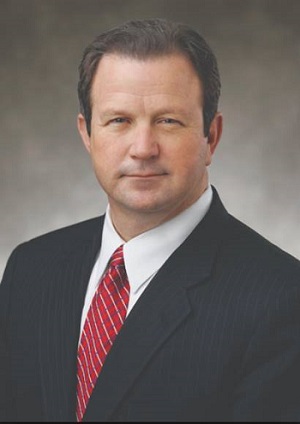Short Hills-Based Dun & Bradstreet Gears Up to Be Center of Excellence for Big Data and Data Analytics
NJ Company sits on a goldmine of business data
No one can deny that Dun & Bradstreet (Short Hills) is a household name. It has been a trusted source of business information for 177 years. The company, which had been public, was recently purchased by a consortium of private equity investors, so it is now private.
The investment consortium was led by led by Cannae Holdings (Las Vegas), CC Capital Partners (New York), and funds affiliated with Thomas H. Lee Partners (Boston). Dun & Bradstreet was acquired for $6.9 billion, including the assumption of $1.5 billion of its net debt and net pension obligations. Shareholders received $145 in cash for each share of common stock.
NJTechWeekly.com spoke with Stephen C. Daffron, president of Dun & Bradstreet, in June, just after the now private company announced that it would be acquiring Lattice Engines (San Mateo, Calif.), a firm with an artificial intelligence (AI)-powered customer data platform. Our conversation ranged widely, from the Lattice Engines acquisition to Dun & Bradstreet’s mission to do well and do good.
Daffron, who came to the company in November 2018 and reports to CEO Anthony Jabbour, is well-positioned to help Dun & Bradstreet soar into the 21st century. He is a Wall Street veteran and former global head of operations and technology at Morgan Stanley, where he led an organization of 17,000 and managed the integration of Smith Barney after its acquisition by the firm.
Following his time on Wall Street, Daffron served as president and CEO of Interactive Data Corporation (Bedford, Mass.), a provider of financial data and analytics to financial service companies. Also, Daffron is a cofounder and managing partner of Motive Partners (New York), a global private equity firm created in 2015 and focused on the financial technology industry. Motive Partners is also an investor in Dun & Bradstreet.
The Lattice Engines Acquisition
When we asked Daffron about the acquisition of Lattice Engines, he explained that Dun & Bradstreet has an “undiscovered continent of data” for business-to-business use: 300 million-plus business records that are constantly being updated. “You can ask questions about almost any company in the world, and get answers about whether this is a company I should do business with, loan money to, trust to be a part of my supply chain or trust to be in industry regulatory compliance.” Like mining gold, “it takes time, effort and energy to pull the data out and refine it and turn it into jewelry,” he said. Lattice and companies like Lattice are part of the refining process.
Lattice’s software enables business-to-business organizations to scale their account-based marketing and sales programs across every channel. Previously, Lattice had been buying a subset of Dun & Bradstreet data. Now the analytical engine can be used with all the data Dun & Bradstreet collects, Daffron said. The transaction will position Dun & Bradstreet as a leading provider of integrated data and analytics solutions for sales and marketing professionals, the company said at the time the acquisition was announced.
With Dun & Bradstreet’s data, along with additional information from its clients, the analytical engine can provide the clients with answers to questions such as who their likely target customers are. Daffron gave the example of a computer company. The computer company would provide information about the clients it already sells to. Dun & Bradstreet would combine that information with its own data, and then cross-reference all the information with Lattice’s data analytics capability. As a result, the computer company will discover many more companies to sell to; and it will be able to develop a more precise, targeted marketing plan. “They can direct their salespeople to be more effective. They can dramatically increase the number of leads they get and their potency, the likelihood that this client will buy the computer.”
Marketing is only one of the areas in which Dun & Bradstreet plans to make use of its wealth of data. The company has an in-depth collection of trade credit data. “We know who is doing business with whom. Our trade credit data allows us to see who is selling what to whom, and even what the accounts receivable are for each of these companies. That allows us to understand risk. So, imagine for a moment that you are trying to do business in Eastern Europe, and you want to look at a likely set of clients there. We can help you understand which of those clients are likely to pay their bills, which is going to be a compliance risk.” This helps clients manage their risk.
Building World Class Capabilities in Big Data Analytics in New Jersey
Dun & Bradstreet aspires to be the “premier company in New Jersey that is involved with big data analytics,” Daffron told us. “We just hired our new chief technology officer, Gil Shaked, away from Citadel, which is a major hedge fund. Before that, he was involved in big data at Morgan Stanley and Credit Suisse. We are actually bringing talent into New Jersey. This is first-tier talent from around the world. We are bringing in people from New York, London, Tel Aviv, and we are bringing in both computer and mathematical talent.” He noted that the new chief analytics officer, Bobby Gupta, came from Morgan Stanley, where he was head of predictive analytics and business intelligence. Neeraj Sahai, president of Dun & Bradstreet International, has relocated from India to New Jersey to work closely with Daffron and the management team.
Daffron noted that the company is in talks with Google because “in our space we have the data that Google envies, and they’d like to have more access to our data.” Dun & Bradstreet is enhancing its ability to access and use the data. “People who aren’t involved in the technology world don’t appreciate this. It’s not as though you are backing up a truck, loading the data on a truck and dumping it out somewhere else. Much of the data we bring in is completely unintelligible. It may be on paper or even word of mouth. We have to collect, cross-reference, cleanse, normalize and curate this data.”
Doing Well and Doing Good
Daffron is adamant that Dun & Bradstreet will be a force for good in the world. His background allows him a “birds eye view of what’s possible and what we can do to improve the world using big data.”
For example, “We are engaged with one of our banks in understanding all the companies that are engaged in human trafficking. We can help you avoid getting into a situation where you’d have to explain why you are doing business with a company that is engaged in human trafficking. We can let you know who in your supply line is actually buying blood diamonds, or, if you are a pharmaceutical company, who in your supply line is no longer involved with the Foreign Corrupt Practices Act, [which prohibits the payments of bribes in foreign countries.] You can manage your risk. Those are areas we will be expanding into as we develop our software further.”
He envisions not only selling this information to companies, but also providing it to nonprofits that can use this data to help address world problems. The company is building an index of human trafficking, but it also has information that lets you identify the women-owned businesses or the veteran-owned businesses in the U.S.
“I take pride that we are addressing information inequality” in our way, Daffron said. “The companies I’ve worked for on Wall Street … don’t have a lack of information. They can afford to find it, curate it and use it themselves. Most of the other people in the world can’t afford to do that. We provide a service to people in other parts of the world who deserve a chance to understand the information that could make their businesses work better.”
On Private Equity
Daffron noted that the company is driving down some costs, removing some redundancies and finding ways to improve cash flow, in line with its acquisition. And that means moving some lower-level functions out of New Jersey.
However, he said, the consortium of investors, led by Cannae chairman William Foley, doesn’t operate in the usual private equity “rip and flip” manner. The consortium told the Dun & Bradstreet management, “We want to grow the company, and we know we have to continue to invest in the company.” Thus, Dun & Bradstreet’s new management is investing in the technology, people, facilities and infrastructure needed to capitalize on its treasure trove of data and accelerate the company’s growth, Daffron concluded.




